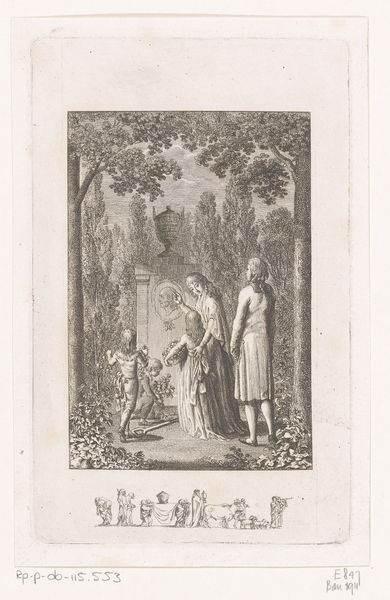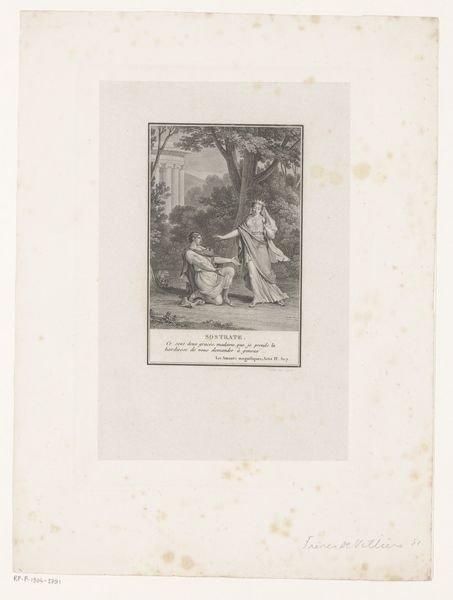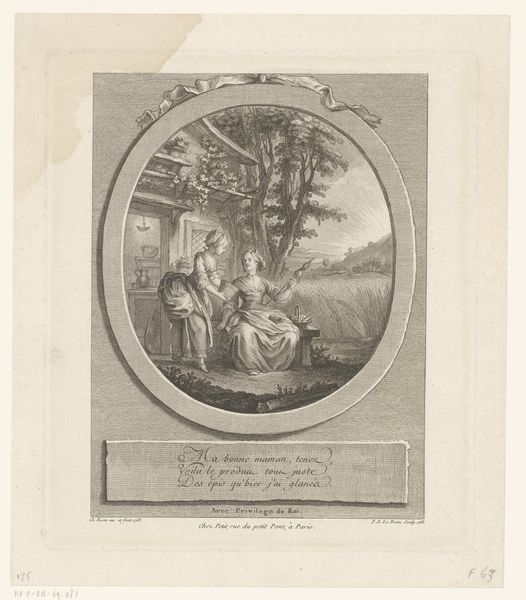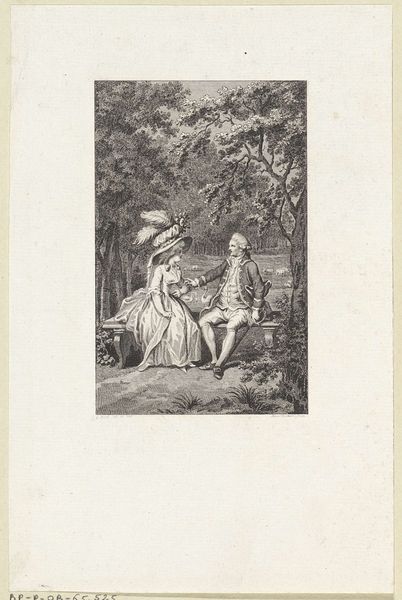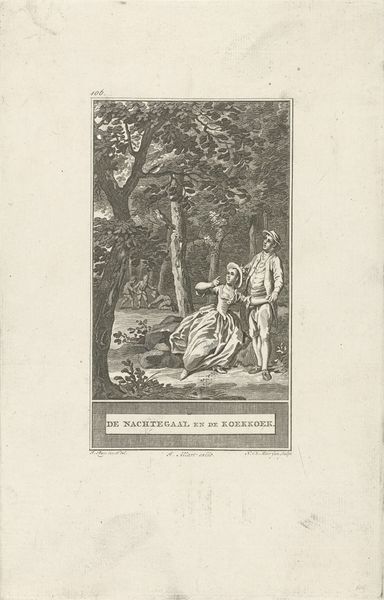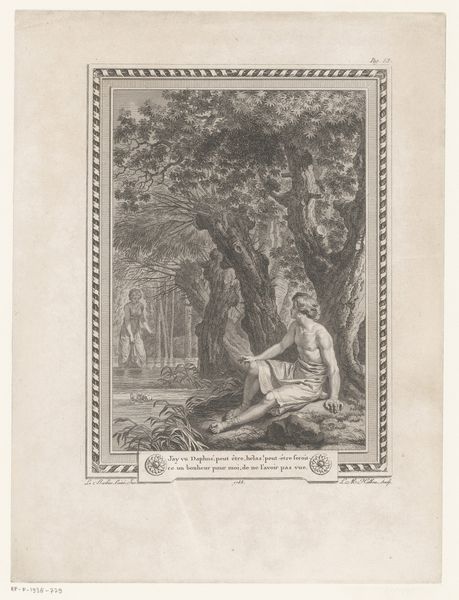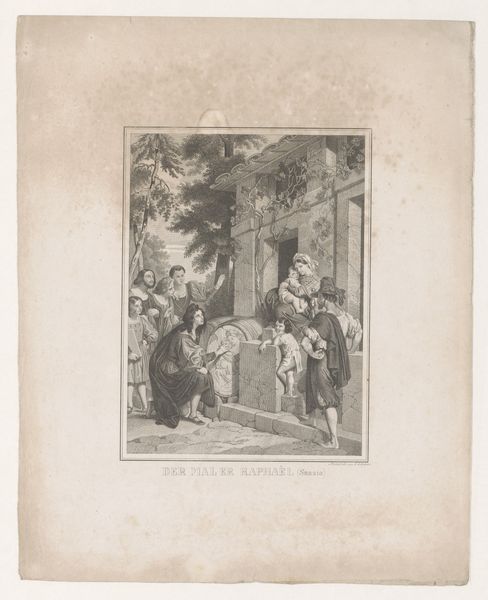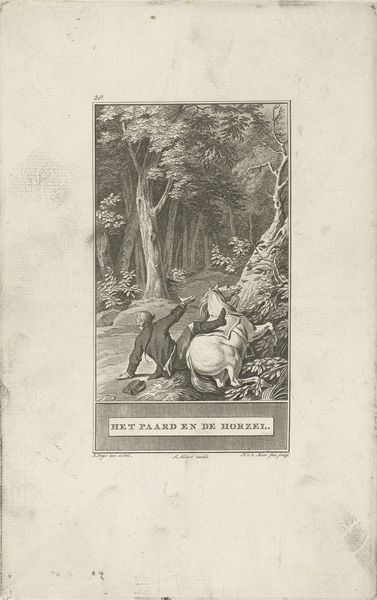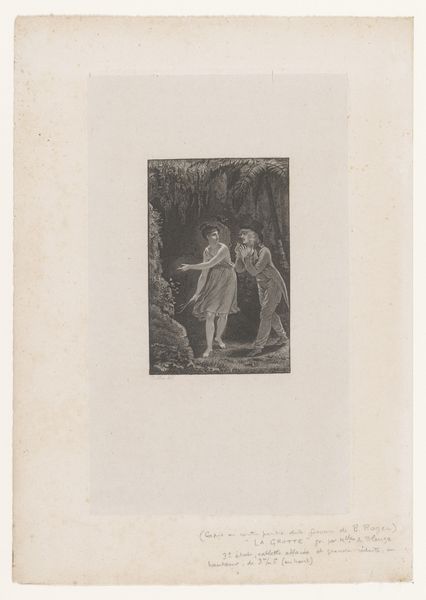
paper, engraving
#
neoclacissism
#
old engraving style
#
landscape
#
figuration
#
paper
#
history-painting
#
academic-art
#
engraving
Dimensions: height 278 mm, width 204 mm
Copyright: Rijks Museum: Open Domain
Editor: Here we have Louis Michel Halbou's "Clymene en Damon," an engraving from 1786 on paper. It has such fine lines, it looks almost ethereal! It is also surprisingly minimalist. How would you interpret this work, thinking about its medium and context? Curator: For me, this piece really highlights the production of images and the social standing associated with them in the late 18th century. Engravings like this were often made to be reproduced, disseminating imagery for a growing consumer culture. Think about the labor involved – the skilled artisan meticulously transferring an image onto a copper plate, enabling multiple prints to be made and sold. Editor: So it’s less about a singular artistic vision and more about widespread accessibility and almost about industry? Curator: Exactly. And we have to consider who had access to these images, how they were consumed, and the messages they conveyed. It reinforces a system where art serves a social function beyond just aesthetics. Note also the very controlled setting that requires human action, not a raw or wild Nature. Editor: That makes me see it in a completely new light! The very controlled nature of engraving amplifies the controlled scene portrayed. I was initially looking at the narrative within the image, but it is the materials that dictate its meaning! Curator: Precisely! By examining the engraving process itself and its relationship to production and consumption, we gain a deeper understanding of its historical and social significance. And it makes us question the traditional hierarchies separating fine art from crafts and reproducible media. Editor: Thank you. Considering the labor and production aspects makes it clear that the intent was much more complex than simple artistry.
Comments
No comments
Be the first to comment and join the conversation on the ultimate creative platform.
